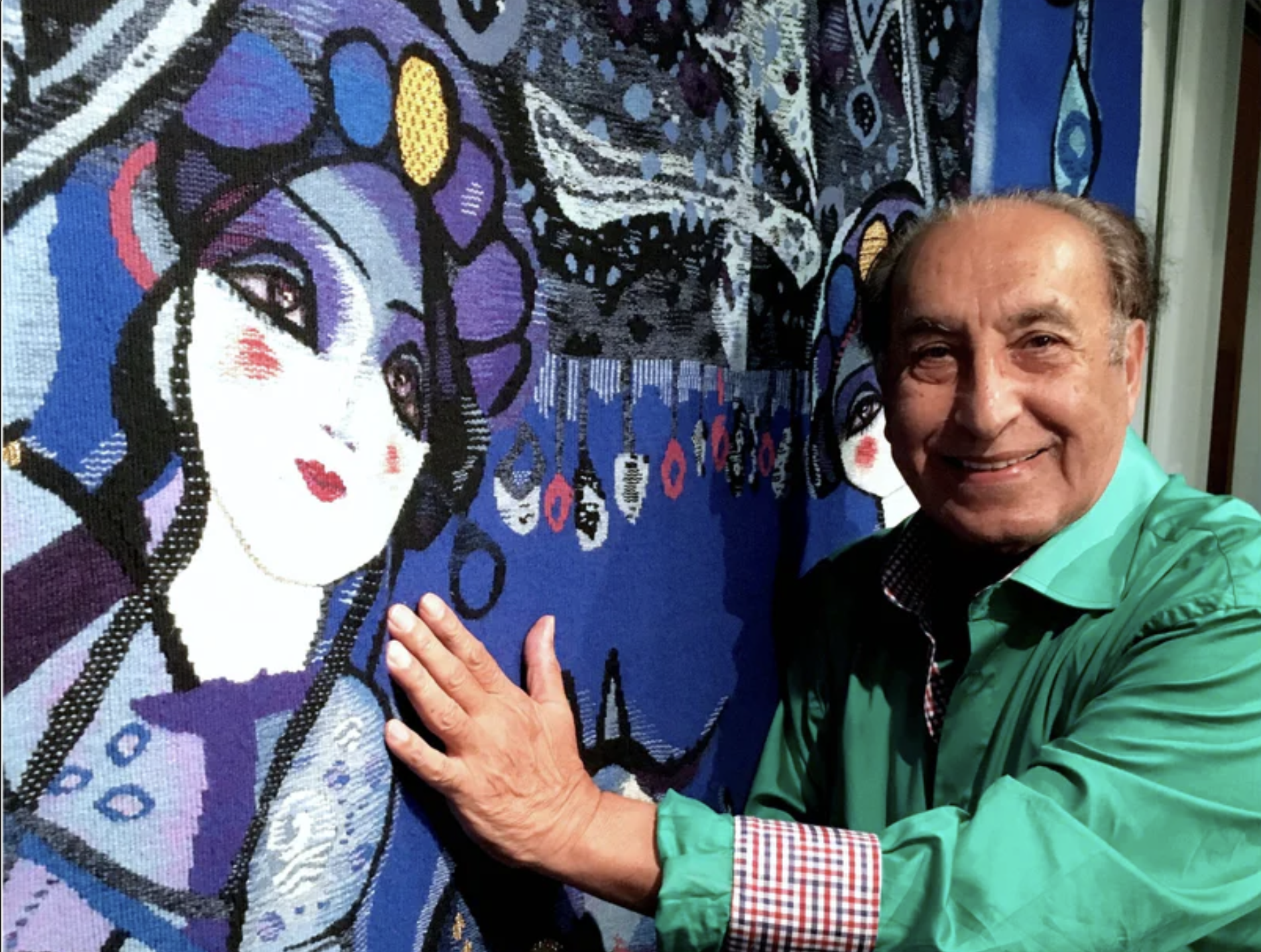Nasser Ovissi: A Poetic Bridge Between Persian Roots and Global Brushstrokes

From Tehran’s old neighborhoods to international galleries, Nasser Ovissi has painted a life that is itself a tapestry—woven of tradition and innovation, myth and modernity. Born in 1934, Ovissi is a pioneer of modern Iranian art who continues to enthrall viewers with compositions that feel like love letters to his heritage. touchag.com+3Wikipedia+3Gallery Ovissi+3
Origins & Artistic Awakening
Though he first studied law and political science at the University of Tehran in the mid-1950s, Ovissi’s heart was elsewhere. In Rome, he immersed himself in fine arts, absorbing Western techniques while never letting go of the Persian aesthetic vocabulary that shaped his identity. Gallery Ovissi+2Wikipedia+2 That duality—East meets West—is central: it allows him to draw on ancient Persian symbols, poetry, and miniature painting, while painting in a language that speaks to a global audience. Gallery Ovissi+2Widewalls+2
Themes and Visual Language
Ovissi’s paintings are immediately recognizable: stylized women, powerful horses, pomegranates, calligraphic forms, sweeping ornamentation and vivid, saturated color. Widewalls+3روزنامه دنیای اقتصاد+3TECHNICALART+3 Women in his work are often serene, idealized figures—echoes of Persian miniatures, of timeless beauty and inner strength. Horses race across his canvases, not just as creatures but symbols of freedom, myth, strength. Pomegranates, birds, angels—these cultural touchstones recur, serving as visual poetry. tuttoarabi.com+3Gallery Ovissi+3TECHNICALART+3
Moreover, Ovissi gives precise attention to color, line, and form—but also to poetry. In many pieces you’ll find verses embedded—either literally or in spirit—with lines repeating across a canvas to create rhythm and lyrical flow. Gallery Ovissi+2روزنامه دنیای اقتصاد+2 It’s this weaving together of text, imagery, and ornament that gives his work a sense of meditation, of memory. TECHNICALART+2Gallery Ovissi+2
Achievements & Journey
Ovissi’s career spans many decades and geographies. After his training, he served as a cultural attaché in Rome and Madrid—a role that not only placed him in diplomatic circles but also allowed his art to travel and evolve. Gallery Ovissi+1
His early accolades included grand prizes at the Tehran Biennales (1962, 1964) and later honors such as the Monaco Contemporary Art Exhibition in 1974. Exhibitions across Europe, Asia, and the United States followed, and his works are now held in major museum collections globally. Christie's+4روزنامه دنیای اقتصاد+4Gallery Ovissi+4
Art critics describe him as “the painter of poetry,” someone whose artistic vision carries the soul of Iran wherever he is. A 2017 exhibit at the Tehran Museum of Contemporary Art marked his six‐decade legacy, unveiling a volume of over a thousand works, spanning eras, styles, moods. Tehran Times+2روزنامه دنیای اقتصاد+2
Why Ovissi Matters Today
In an age when art often conflates political and cultural identity, Ovissi’s work is a reminder of art’s power to preserve beauty and memory. He does not shy away from his Iranian heritage; instead, he embraces it, reshapes it, and allows it to converse with multiple influences. His visual language provides both nostalgia and renewal—a voice for those who remember Iran’s rich past, and for those who see its future in a changing global world.
His style continues to attract collectors and admirers worldwide, not merely because of his technical mastery, but because his paintings carry an emotional and spiritual resonance. They ask us to look—to feel—and in doing so, to imagine a world where cultural memory is not a relic, but a living current. Tehran Times+2Widewalls+2
In Nasser Ovissi's art, horses gallop not just across canvas but across time; women gaze not merely at the viewer but at the horizon between what was, what is, and what could be. For Ovissi, art is more than painting—it is dream made visible, tradition made new. With every stroke, he reminds us that beauty is never passé—it endures.

